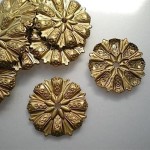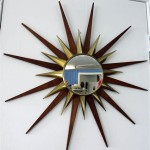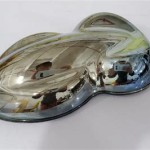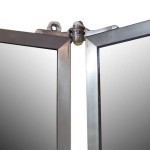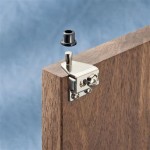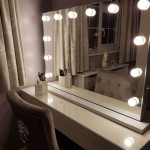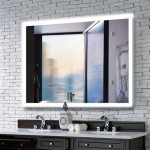Can You Put a Frame on a Frameless Mirror?
Frameless mirrors offer a sleek, modern aesthetic, often favored for their minimalist appeal. However, design preferences evolve, and homeowners may eventually desire a more traditional or ornate look. This raises the question: can a frame be added to a frameless mirror?
The short answer is yes, in most cases, a frame can be added to a frameless mirror. Several methods exist for achieving this, each with its own set of considerations regarding cost, complexity, and the final aesthetic.
One of the most common and straightforward methods involves using adhesive-backed framing. These frames, typically made of lightweight materials like polystyrene or polyurethane, come with a pre-applied adhesive strip on the back. This allows for easy application directly onto the mirror's surface. This method is particularly attractive for DIY enthusiasts due to its simplicity and relatively low cost. However, it's crucial to measure accurately to ensure a proper fit and to carefully clean the mirror's surface before application to ensure optimal adhesion.
Another option is to build a custom frame. This method offers greater flexibility in terms of design and material choice. Wood, metal, or even repurposed materials can be utilized to create a unique frame tailored to the specific dimensions and style of the mirror and the surrounding décor. While this approach offers maximum customization, it requires more advanced DIY skills and specialized tools. Accurate measurements and precise cuts are essential for a professional-looking result.
For those seeking a more seamless and integrated look, a frame can be built around the mirror. This involves constructing a frame box that the mirror sits within. This method often provides a more substantial and finished appearance compared to simply attaching a frame to the mirror's surface. It's also a suitable option for larger or heavier mirrors where adhesive-backed frames might not provide sufficient support. This approach, however, typically requires more advanced carpentry skills and a greater time investment.
A fourth method involves using clips or brackets designed specifically for frameless mirrors. These clips are attached to the back of the mirror and then the frame is secured to the clips. This offers a less permanent solution compared to adhesive or built-in frames, allowing for easier removal or replacement of the frame in the future. This method is particularly beneficial for renters or those who like to change their décor frequently.
When considering adding a frame to a frameless mirror, several factors should be taken into account. The size and weight of the mirror play a crucial role in determining the appropriate framing method. Larger, heavier mirrors may necessitate a more robust framing solution than smaller, lighter ones. The desired aesthetic also influences the choice of frame material and style. A ornate, traditional frame might complement a vintage-inspired bathroom, while a sleek, minimalist frame might be more suited to a contemporary setting.
The existing décor of the room should also be considered. The frame should complement the overall style and color palette of the space. For instance, a wooden frame might harmonize well with natural wood elements in the room, while a metallic frame could enhance a more industrial or modern aesthetic.
Budget is another significant factor. Adhesive-backed frames are generally the most budget-friendly option, while custom-built frames or professional framing services can be more expensive. DIY projects can often save on labor costs, but require an investment in tools and materials.
Finally, the individual's DIY skill level should be considered. Applying adhesive-backed frames is a relatively simple task, while building a custom frame or installing clips requires more advanced skills and knowledge. If unsure, seeking professional assistance from a framer or carpenter is advisable to ensure a safe and satisfactory outcome.
Proper preparation is key to successfully framing a frameless mirror. Thoroughly cleaning the mirror's surface with a glass cleaner ensures optimal adhesion for adhesive-backed frames. Accurate measurements are crucial for all framing methods to guarantee a proper fit. Having the necessary tools readily available before starting the project can prevent delays and frustration.
Choosing the right framing method and materials can transform a simple frameless mirror into a stylish focal point. Careful consideration of the factors outlined above will help ensure a successful and aesthetically pleasing result.

How To Frame Out That Builder Basic Bathroom Mirror For 20 Or Less

How To Frame Out That Builder Basic Bathroom Mirror For 20 Or Less

How To Frame Out That Builder Basic Bathroom Mirror For 20 Or Less

How To Install A Mirror Without Frame Merrypad

Mirror Frame Diy How To Update A Basic Bathroom Our Faux Farmhouse

Diy Bathroom Mirror Frame Without Removing Clips Her Happy Home
:strip_icc()/DesireeBurnsInteriors1-f76d25cad90041c88fbae4a7dc10aab4.jpg?strip=all)
2 Simple Ways To Hang A Frameless Mirror

5 Easy Ways To Upgrade Your Frameless Bathroom Mirror

How To Hang A Frameless Mirror On Wall

How To Add A Frame Your Bathroom Mirror

